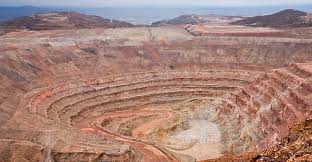The Central Government has taken up several initiatives for promoting exploration and mining of Critical Minerals in the country.
The Mines and Minerals (Development and Regulation) Act, 1957, has been amended in 2023 to empower Central Government to auction blocks in respect of 24 critical and strategic minerals. So far 14 blocks have been successfully auctioned. In order to promote exploration of critical and deep-seated minerals, a new mineral concession namely, Exploration Licence has been introduced for 29 critical and deep-seated minerals, which will permit the licencee to undertake reconnaissance and prospecting operations for these minerals.
Further, to encourage private participation in exploration, Ministry of Mines has notified 22 private exploration agencies (NPEAs). These agencies are taking up exploration projects through funding from National Mineral Exploration Trust (NMET).
Various policy reforms have been introduced by the Government of India through amendment in MMDR Act, 1957 during the year 2015, 2021 and 2023. Some of the key features of these amendments include grant of Mineral Concessions through auction for greater transparency, establishment of District Mineral Foundation with an objective to work for the interest and benefit of persons and areas affected by mining related operations, establishing NMET (National Mineral Exploration Trust) for providing impetus to exploration, removal of the distinction between captive and merchant mines by allowing all captive mines to sell up to 50% of the minerals produced, empowering Central Government to exclusively conduct auction for mining lease and composite licence for 24 critical minerals, accreditation of NPEAs (Notified Private Exploration Agencies) for private participation in mineral exploration and introduction of a new mineral concession namely, Exploration Licence for 29 critical and deep-seated minerals. All these reforms will foster investment and increase employment opportunities in the mining sector.
In Mineral Conservation and Development Rules, 2017, “Chapter V: Sustainable Mining”, covers various environmental aspects such as removal and utilisation of top soil, precaution against ground vibrations, prevention and control of air and noise pollution, precaution against discharge of toxic liquid and restoration of flora. Further, every lease holder has to comply with the provisions made under Environment (Protection) Act, Forest (Conservation) Act, Guidelines by Pollution Control Board, Central Ground Water Authority etc. Similarly, the provisions for occupational safety & health for persons employed in the mines have been made in the Mines Act 1952 and rules & regulations framed there under. The provisions of labour safety standards are implemented through Directorate General of Mines Safety (DGMS).
This information was given by Union Minister of Coal and Mines Shri G. Kishan Reddy in a written reply in Rajya Sabha today.
 Indian Industry Plus A Pratisrutiplus Suppliment
Indian Industry Plus A Pratisrutiplus Suppliment












